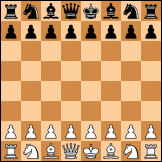smrf wrote:Ajedrecista wrote:... Almost a month ago, Reinhard Scharnagl did estimates using inverse interpolation and the output of the results is similar to yours. ...
The idea of my calculation using inverse interpolation has been based upon:
a) switching to the natural logarithm, because Perft seems to me mainly a growth function
b) the growth factor seems to have an asymptotic behavior for about the next hundreds of ply levels,
thus using continued fractions seems to be more appropriate than to follow a polynomial approach.

Hi Reinhard:
I see that you put a table of your calculations, but this table had a little bug in odd values of n, as you said:
http://www.talkchess.com/forum/viewtopi ... 49&t=39678
The changes are minimum but they exist. Regarding your points:
a) I agree, it seems a good way for me; I also use logarithms (in base 10) for my intermedial calculations just before my polynomials.
b) (Sven was faster than me). I agree with the issue of the asymptotic behaviour, but I disagree (slightly) with your point 'blaming' polynomials: the polynomials can be adjust when more true perft values will be known. You have to do the same with the last column of values that will not be constant although you suppose they are constant because is the simplest way I see for interpolating (and maybe it is the only way). I am sure that if we ignore, for example, Perft(11) and Perft(12) values (as they were unknown), using your method of inverse interpolation, for estimating Perft(11) you would get different values on those columns of continuous fractions than the true ones.
I think our methods are not better or worse than the other, only they are different but also valid (the relative error in Perft(13) will be 'small'). If I take your last value you got: 1.98112079e+18; and mine: 1.980468096e+18 (the central value of my given interval), the relative error between them is less than 0.033%.
Regards from Spain.
Ajedrecista.


